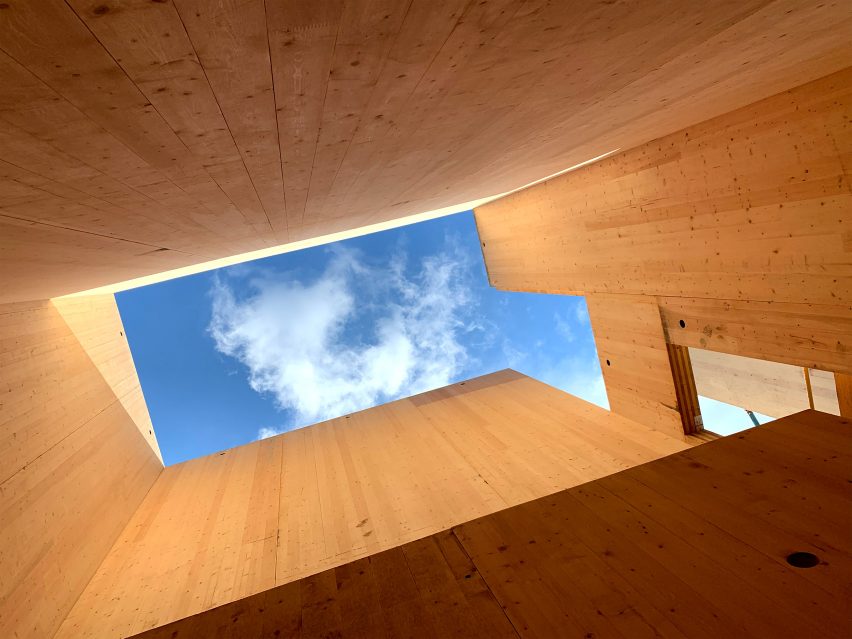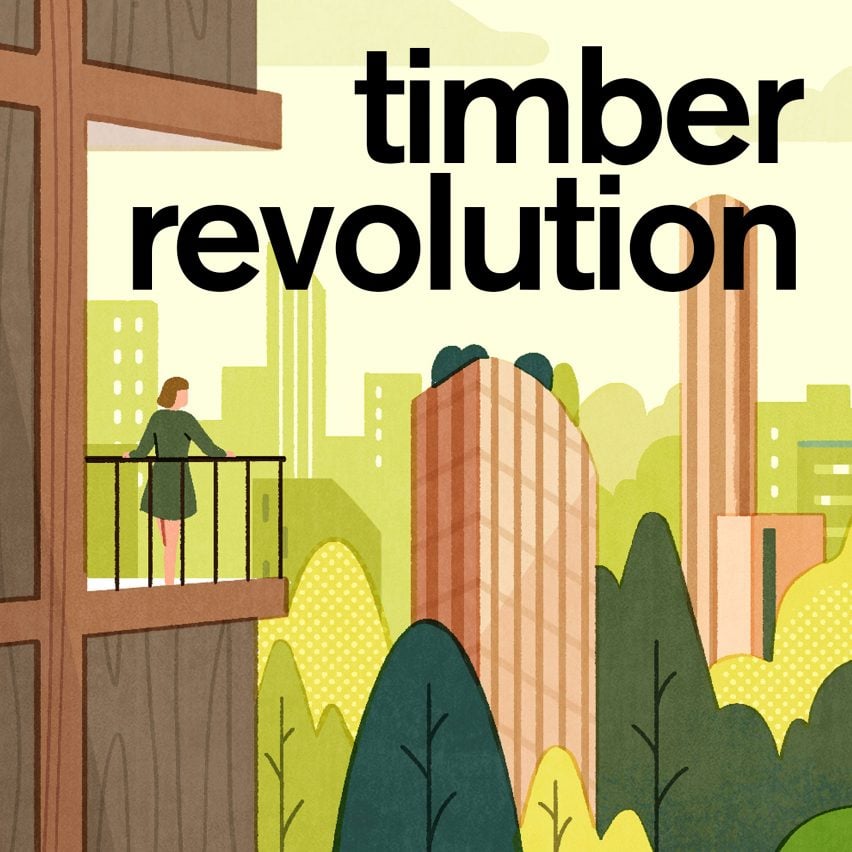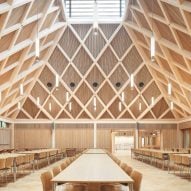Mass timber will not become a mainstream building product because it uses too much wood, construction material expert Benjamin Kromoser claims in this interview for the Timber Revolution.
“If we go more in the direction of mass-timber buildings we don’t have enough material, so the idea of scaling it up in the near future will fail,” he told Dezeen.
“I think there will be a possibility to scale it up a bit, so its use will go up in the next few years – especially in Sweden and Norway, where they have built quite a lot of cross-laminated timber production facilities.”
“But from my point of view, I think we will reach the maximum of mass timber in at least 10 years. I think, really, it will be before 2030.”
“Using wood doesn’t [automatically] make a building sustainable”
Kromoser leads the Institute of Green Civil Engineering at the University of Natural Resources and Life Sciences (BOKU) in Vienna, which receives funding from both industry and public sector organisations.
He believes that the main challenge for the building industry is using fewer raw materials overall, rather than simply switching from concrete and steel to biomaterials like wood.
“Our aim is to minimise the environmental impact of buildings over the whole lifecycle,” he said.
“Using wood doesn’t [automatically] make a building sustainable, because basically, what we have as a problem is that in total we need too much materials.”
Mass timber is the term given to engineered wood products like cross-laminated timber (CLT) and glued laminated timber (glulam), which typically constitute layers of wood bound together to form strong structural components.
“Wood is a limited resource”
Because trees sequester carbon from the atmosphere, replacing heavily polluting man-made materials like concrete and steel for timber can significantly reduce the embodied carbon footprint of buildings.
But while mass timber can be used for taller buildings than conventional timber-frame construction, it uses much more wood. That leads Kromoser to doubt its overall sustainability.
“Wood is a limited resource,” he said. “It always has to be a balance between what we take from the forest to use for building construction and how much grows again.”
“If we go in the direction of building everything with CLT, then maybe from the point of view of temporarily storing CO2 it would be great, but it’s definitely not really possible to scale that up.”

Even in Austria, where around half the country is forested, he is doubtful it would be possible to translate that into half of new buildings in Vienna being made from mass timber.
Instead, he argues that to increase the proportion of construction that uses wood, more material-efficient methods like timber frame must take precedence.
“It would be great if we could build 50 per cent of the buildings in Vienna out of wood but we are far away from that regarding the availability of the materials, so going in the direction of mass-timber construction is wrong,” he said.
“We have to go in the direction of using timber in the most efficient way and that means structurally optimised buildings, so mass timber is definitely not the right way to go.”
“Timber framing is much more efficient, and you can quantify that with a life-cycle assessment.”
Need to “decouple” material use from economic growth
To produce one metre-cubed of CLT or glulam, around 2.5 metres cubed of wood is required, roughly 25 per cent more than for timber-frame construction.
Kromoser argued that mass timber’s main application should be for creating cantilevers or bearing heavy loads, or for living spaces in attic rooms thanks to its thermal massing properties.
“Timber is a great material, and mass timber where it has its justification is a good thing,” he said. “But thinking about how the building can be structurally optimised is a really important thing to keep in mind.”
“That’s my key message, because then we can reduce the amount of raw material required and then we can build more out of timber,” he continued.
He argues that depicting mass timber as a golden ticket to decarbonising the built environment could risk distracting from the main issue of material use.
“If you’re speaking about a big potential in mass timber construction, it could justify for our society, ‘if we use this material, it doesn’t matter anymore how much we use’. That’s absolutely not right.”
The major challenge, according to Kromoser, is to decrease the use of raw materials while still enabling the growth of economies around the world.
“Further development of society is always linked to an increase in materials, and that’s the wrong direction,” he said.
“So what we really have to think about is how we decouple the connection between material use and the further development of society. That’s the biggest issue and it’s not linked to construction material.”
The top photo is courtesy of Benjamin Kromoser.

Timber Revolution
This article is part of Dezeen’s Timber Revolution series, which explores the potential of mass timber and asks whether going back to wood as our primary construction material can lead the world to a more sustainable future.

